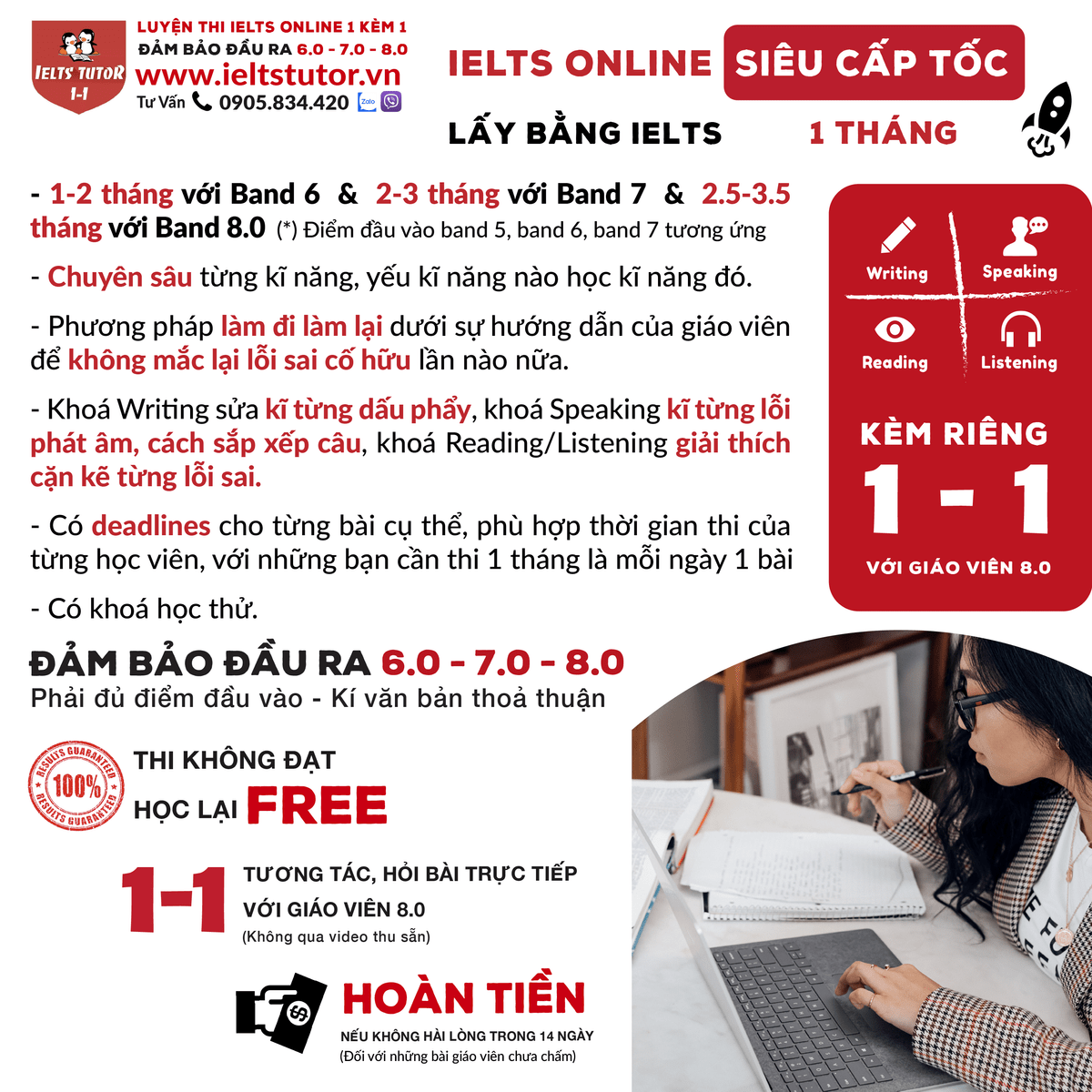Bên cạnh PHÂN TÍCH ĐỀ THI THẬT TASK 2 (dạng advantages & disadvantages) Some students work while studying. Discuss the advantages and disadvantages of this trend and give your opinion?NGÀY 04/8/2020 IELTS WRITING GENERAL MÁY TÍNH (kèm bài được sửa hs đi thi), IELTS TUTOR cũng cung cấp luyện đề Tā moko (Đề thi IELTS READING 1/6/2024)
I. Kiến thức liên quan
II. Tā moko (Đề thi IELTS READING 1/6/2024)
Tā moko
The practice of making markings on the human body has long been in existence. These days, it is commonly expressed by the wearing of tattoos or piercings, and is symbolic only of a personal attitude. Yet for Maori, traditionally markings on the body, called moko, have a much deeper, symbolic relevance.
Although parallels can be seen between moko and tattooing, there are a number of fundamental differences. Perhaps the most striking is that while tattoos involve the use of needles to inject ink beneath the surface of the skin, moko designs were traditionally chiselled into the skin. A painful procedure, the ink was carved into the body of the wearer by using fine chisels and a mallet.>> Form đăng kí giải đề thi thật IELTS 4 kĩ năng kèm bài giải bộ đề IELTS SPEAKING quý đang thi (update hàng tuần) từ IELTS TUTOR
Another contrast to the tattooing more common today is that each marking had a message which could be read by those familiar with the process. Moko told of the wearer’s family and his tribe, illustrating who was a chief or other member of Maori aristocracy, and such clear markings meant that disputes over birthrights and status were avoidable. Moko spoke of social position within the tribe, and thus they were a dynamic form of marking; as tribe members grew, so too did the number and positioning of the moko. Women were tattooed on the chin once they had come of age, meaning that they were now entitled to speak at meetings. Markings under the nose represented childbirth, the first breath of the young. A moko design on the leg represented speed, on the arm showed occupation. For men, facial moko told a history of battles, injuries and victories, and it is these images that were the first to reach Europe. With wide eyes, open mouth and full facial moko, the Maori warriors were certainly feared by these early settlers.
In recent years, the moko has become synonymous with gang culture, as highlighted in a number of New Zealand-produced movies, yet at the same time has now reached international recognition, with pop stars and other celebrities adopting the designs. This is not a situation which pleases everyone. With so much cultural and historical significance, most Maori are rightfully protective of moko and its various designs. This possibly stems from a fear that Pakeha (the Maori name for the settlers) did not understand the significance of moko. For Maori, it was something which had to be earned, that represented an achievement. Moko were not given to everyone, and permission had to be sought from Maori elders. This was often a long, involved process of discussion because, of course, once applied, the moko could not then be withdrawn. Then, too, the early history of the settlers must be considered. For many Pakeha, it was simply a nice design, a decoration for which settlers used to pay in weapons and ammunitions. They would encourage tribes to fight and return with moko heads for display in European museums, and from this beginning it is easy to understand Maori reluctance to see moko ‘Westernised’.
Are the following statements TRUE, FALSE or NOT GIVEN according to the text?
- Moko has an equal significance to tattooing.
- Chisels are used in the moko process because it can create fine lines.
- Not only the design but the placement of moko had relevance.
- Children were forbidden from wearing moko.
- Warriors wore moko to frighten their enemies.
- Europeans are not allowed to wear moko designs.>> IELTS TUTOR hướng dẫn PHÂN TÍCH ĐỀ THI 30/5/2020 IELTS WRITING TASK 2 (kèm bài sửa HS đạt 6.5)
- Modern moko is only worn by gang members.
- Traditionally, moko application involved a process of consultation and discussion.
- Pakeha traditionally did not appreciate the significance of the designs.
- Heads with moko designs were traded.
IELTS TUTOR lưu ý:
1 FALSE
2 NOT GIVEN
3 TRUE
4 NOT GIVEN
5 NOT GIVEN>> IELTS TUTOR có hướng dẫn kĩ SỬA BÀI IELTS WRITING TASK 2 ĐỀ THI THẬT NGÀY 22/8/2020 của HS IELTS TUTOR đạt 6.5 Writing
6 FALSE
7 FALSE
8 TRUE
9 TRUE – ‘For many Pakeha, it was simply a nice design‘
10 TRUE

Các khóa học IELTS online 1 kèm 1 - 100% cam kết đạt target 6.0 - 7.0 - 8.0 - Đảm bảo đầu ra - Thi không đạt, học lại FREE
>> Thành tích học sinh IELTS TUTOR với hàng ngàn feedback được cập nhật hàng ngày



